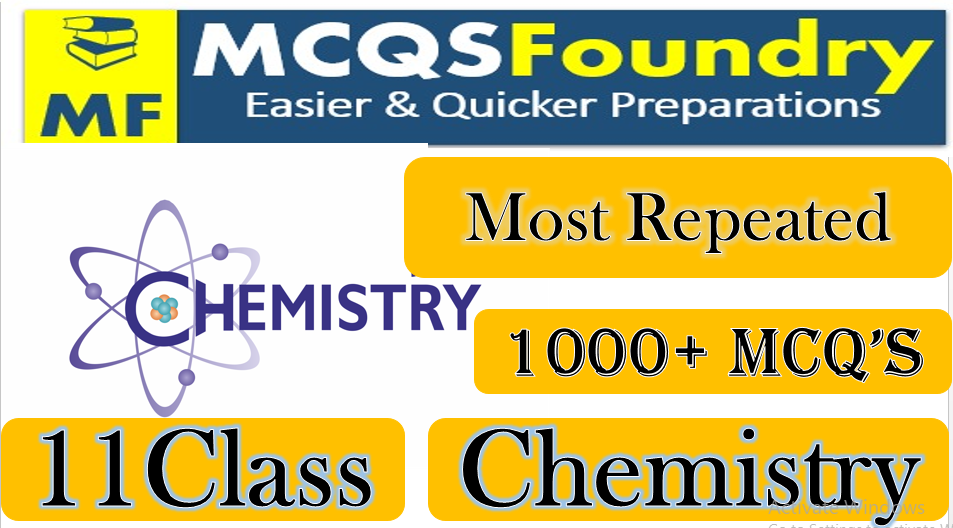We are providing accurate Some Basic Concepts of Chemistry Class 11 Mcq with Answers. Firstly You can read First year some basic concepts of chemistry class 11 mcq with answers pdf.

| Chemistry Mcq Questions For Class 11 Pdf Download Chapter 1 | Chemistry Mcq Questions For Class 11 Pdf Download Chapter 2 |
| Chemistry Mcq Questions For Class 11 Pdf Download Chapter 3 | Chemistry Mcq Questions For Class 11 Pdf Download Chapter 4 |
| Chemistry Mcq Questions For Class 11 Pdf Download Chapter 5 | Chemistry Mcq Questions For Class 11 Pdf Download Chapter 6 |
| Chemistry Mcq Questions For Class 11 Pdf Download Chapter 7 | Chemistry Mcq Questions For Class 11 Pdf Download Chapter 8 |
| Chemistry Mcq Questions For Class 11 Pdf Download Chapter 9 | Chemistry Mcq Questions For Class 11 Pdf Download Chapter 10 |
| Chemistry Mcq Questions For Class 11 Pdf Download Chapter 11 | Chemistry Mcq Questions For Class 11 Pdf Download Chapter 12 |
| Chemistry Mcq Questions For Class 11 Pdf Download Chapter 13 | Chemistry Mcq Questions For Class 11 Pdf Download Chapter 4 |
Chapter 2
Experimental Techniques in Chemistry
1. In paper chromatography, the point to which the solvent rises to maximum extent is called:
- Eluent
- Chromatogram
- Solvent front ent front
- Base line
2. Which one of the following substances is used as decolorizing agent:
- Animal charcoal
- Conc. H2SO4
- CaCl2
- Silica gel
3. The iodi ne present in water can be separated by which one of the following techniques:
- Sublimation
- Chromatography
- Filtration
- Solvent extraction
4. Chromatography in which the stationary phase is liquid will be known as:
- Adsorption chromatography
- Partition chromatography
- Column chromatography
- None of these
5. Rate of filtration can be increased using:
- Desiccator
- Chromatographic tank
- Cold finger
- Suction flask
6. A component having small value of K (distribution coefficient) mostly remains in:
- Stationary phase
- Mobile phase
- Chromatographic tank
7. None of these Direct conversion of solid into vapors is called:
- Crystallization
- Sublimation
- Distribution
- Vaporization
8. Which of the following is purified by sublimation:
- Naphthalene
- Benzoic acid
- Ammonium chloride
- All of these
9. Substance that does not show the process of sublimation is:
- K2Cr0O7
- Iodine
- Naphthalene
- NH4Cl
10. Solvent extraction is an equilibrium process and is controlled by:
- Distribution law
- The amount of solvent used
- Law of mass action
- The amount of solute
11. Which is not used as drying agent in vacuum desiccator is:
- P2O5
- CaCl2
- MgCl2
- Silica gel
12. Which chemical do not undergo sublimation?
- KMnO4
- Naphthalene
- NH4Cl
- Iodine
13. Iodine dissolves in water in the presence of KI due to formation of which one of the following species?
- 12
- 1
- 13
14. The most common solvent used in solvent extraction is:
- Acetone
- Ethanol
- Rectified spirit
- Diethyl ether
15. Which of the following substance shows the property of sublimation?
- Sodium chloride
- Ammonium chloride
- Copper chloride
- Acetic acid
16. In paper chromatography, the mobile phase is usually:
- Liquid ammonia
- Water
- Organic liquid
- None of these
17. The comparative rate at which the solutes move in paper chromatography depends on:
- The size of paper
- Rr values of solutes
- Temperature of the experiment
- Size of the chromatographic tank used
18. When hot saturated solution is cooled very slowly we get:
- Medium size crystals
- Large size crystals
- Premature crystallization of the substance
- No crystals
19. Chromatography is the process which involves the distribution of a solute between:
- Two mobile phases
- A stationary phase and a mobile phase
- Two stationary and two mobile phases
- Two stationary phases
20. In CCl4 solvent, I2 shows:
- Blue colour
- Brown colour
- Pink colour
- Purple colour
21. The drying Agents used in vacuum desiccator are:
- CaCl2
- Silica gel
- Both a and b
- None
22. The ratio of the solute in organic phase to that in aqueous phase is called:
- Rate constant
- Equilibrium constant
- Distribution coefficient
- Arrhenius constant
23. When an organic compound which is volatile or thermally unstable it is separated by:
- Crystallization
- Sublimation
- Solvent extraction
- Chromatography
24. Iodine can be purified by process of:
- Evaporation
- Saponification
- Sublimation
- Crystallization
25. Insoluble particles can be separated from a liquid by:
- Sublimation
- Solvent extraction
- Filtration
- Crystallization
26. Repeated extraction using small portion of solvent are more:
- Accurate
- Efficient
- Slow
- Rapid
27. The chromatography in which stationary phase is liquid is called:
- Partition chromatography
- Column chromatography
- Adsorption chromatography
- All of these
28. In chromatography the stationary phase:
- is a solid
- Is a liquid
- May be liquid or gas
- May be solid or liquid
29. The drying agents used in vacuum desiccator are:
- AGCI
- NH4Cl
- CaCl2
- AICI:
30. Gooch crucible is made of:
- Asbestos
- Clay
- Porcelain
- Iron
31. Solvent extraction is a process:
- Exothermic
- Endothermic
- Equilibrium
- Non-equilibrium
32. Purity of a substance is checked by:
- Crystallization
- Sublimation
- Solvent extraction
- Chromatography